This New Space-inspired Camp in Antarctica Has Luxury Glass-enclosed Pods and Thrilling Excursions — and We Were Among the First to Visit
It offers an alternative way to experience Antarctica.
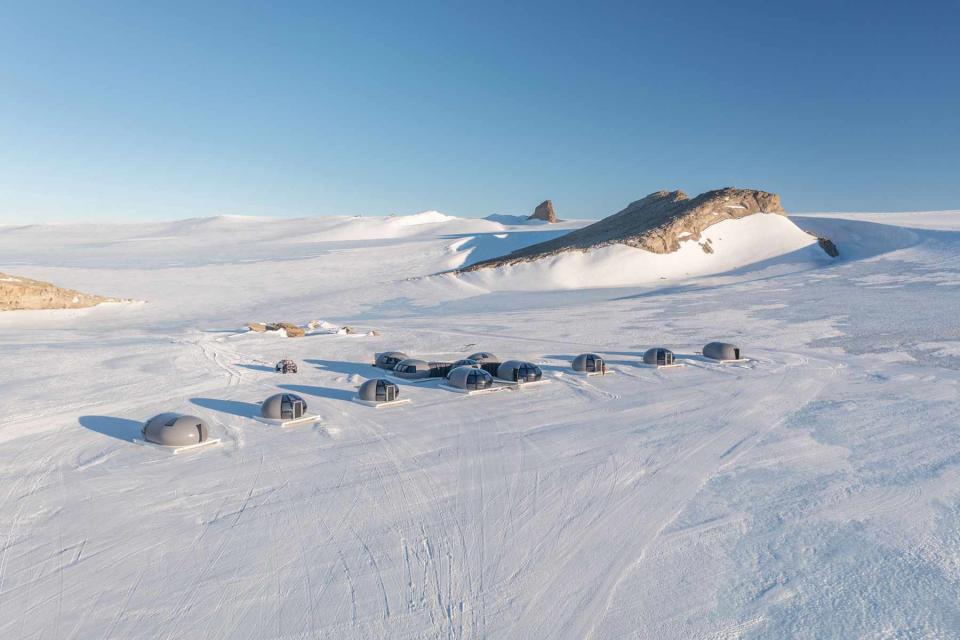
Courtesy of Echo White Desert
I was surrounded by endless white terrain, interrupted only by spires of granite protruding from the ground. These interruptions in the near-flawless horizon were nunataks — the ridges of mountains that emerged from an ice field or glacier in Antarctica. I had arduously climbed one, dodging the wind-carved dens of angry storm petrels and staying upright in 25-knot gusts that came from seemingly every direction. But the view from this summit made the journey worth it.
My eyes followed my mountaineering guide’s pointed finger to what looked like a collection of boulders below us. I quickly realized the smooth, uniform shapes could be none other than what I traveled all the way across the world to find: Echo camp, the newest addition to the ultra-luxe White Desert family.
White Desert is a tour operator with a collection of modular, removable luxury camps developed by a husband and wife duo of polar explorers, Patrick and Robyn Woodhead. It all started in 2005 with their flagship camp: Whichaway. It's an environmentally sustainable camp of pod accommodations located at the Schirmacher Oasis, an ice-free plateau in East Antarctica.
Most of Antarctica's visitors travel by cruise ships that bring them to the continent's periphery. But White Desert offers an alternative way to experience Antarctica that takes travelers deeper into the continent. The highly specialized interior expeditions require logistical know-how and near-professional levels of athletic aptitude. (For reference, climbing a nunatak would be a gentle hike anywhere else, but it's akin to a Spartan race in Antarctica due to the weather conditions.)
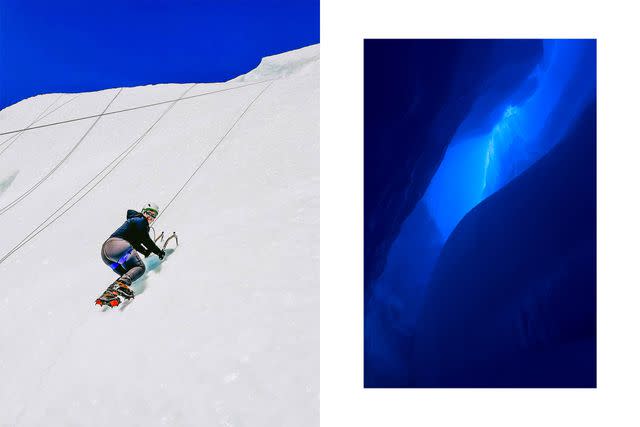
Ali Wunderman
My journey was to see the evolution of White Desert — from its very first Whichaway camp to the newest space-inspired Echo camp. But, of course, getting there was no easy task.
While most travelers depart from South America, White Desert’s guests first congregate in Cape Town, South Africa, to catch a five-hour chartered flight (either via Gulfstream G550 or Airbus A340) to Queen Maud Land, Antarctica. (Queen Maud Land, located in eastern Antarctica, is a territory of Norway.) From here, they take a private jet to Wolf's Fang Runway — a White Desert-operated runway that is the continent's first private jet runway.
I chose to streamline my travels by taking United Airlines’ new direct Newark to Cape Town route. Their signature Polaris class allowed me to stay on top of my sleep schedule: I knew Antarctica would require that I was well rested.
Once in Cape Town, White Desert’s team joined me at my hotel, Ellerman House, to help pack my gear, ensuring I had everything they instructed me to bring to survive the subzero temperatures and 24-hour sunlight. It was followed by a safety briefing about all the ways Antarctica could kill us and how we should not harass penguins.
It was during this briefing that my group learned our departure would be slightly delayed due to the weather. It was our first lesson that Antarctica was entirely in control — we would need to respect it or succumb to it.
When go-time was confirmed the next day, a chauffeur brought me to my fellow travelers at Cape Town International Airport’s ExecuJet lounge. The staff escorted us through security and customs and onto the Airbus. We sipped Champagne with a mixture of excitement and nervousness, knowing Antarctica’s volatile and violent weather could turn us around at any moment. But the uncertainty made it that much more thrilling.
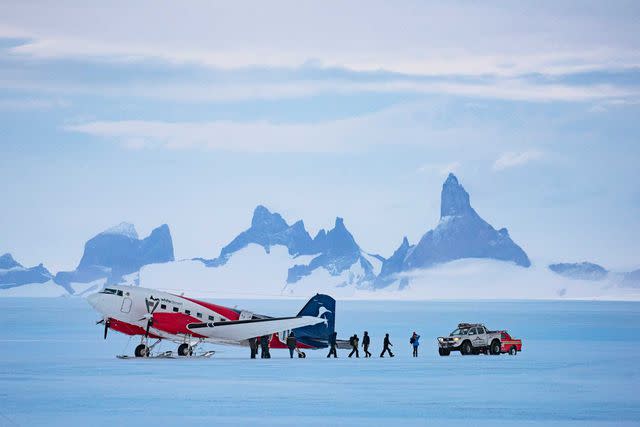
When I took my first step off the plane and onto Antarctica, I felt like Neil Armstrong — or what I imagined he felt like when he first stepped on the moon. I knew there was no going back to the person I was before this adventure.
It was nearly midnight by the time a World War II-era Basler plane delivered us to Whichaway camp. Though, the sunlight gave no indication of time.
We warmed up in the communal pods, which had an old-world explorer feel and were outfitted with soft couches, a full library of books on polar adventure, and a dining room. We retired to our own cozy sleeping pods — there are six pods at this campsite. I found it hard to believe the whole site could be removed at any moment, but the porta-potty-like bathroom setup confirmed that nothing about this camp was inherently permanent.
The next morning, after a full English breakfast, we geared up for a five-hour hike to a nearby blue ice cave. As soon as we picked out our helmets and crampons, Vila, the Icelandic camp manager, informed us that plans had changed: We were taking a two-and-a-half-hour flight to Atka Bay to visit an emperor penguin colony since the weather on the coast was suitable and we needed to take advantage of it.
We took a short hike across the neighboring frozen lake where we waited for a plane that never showed up. In the hour since our new plans were laid, the wind had picked up and the Basler couldn't land. Back to the blue ice cave we went, with another humbling reminder of who was in charge.
The next few days were filled with ice climbing, glacier hikes, meals that could earn the continent its first Michelin stars, and sauna sessions. There were even presentations from staff — some are professional athletes — on their notable adventures. I was particularly captivated by the tale of Manu, a French guide who joined the expedition that recently discovered Irish explorer Ernest Shackleton’s lost ship, Endurance. (We all also befriended the resident south polar skua, Dickie.) Any anxiety I felt about being completely offline was replaced by the joy of being present and the fact that White Desert’s staff never allowed for unwanted downtime — even when the weather reshaped the schedule.
Whichaway came to feel like home — a place where the highest levels of service were combined with the thrill of wilderness adventure. Being there nudged me beyond my comfort zone, forcing me to toughen up, look beyond my limits, and keep levity at the forefront.
Despite Whichaway's comforts, I was eager to see Echo camp. After all, it was inspired by American astronaut Buzz Aldrin's remark about Antarctica being the closest thing to outer space he had encountered on Earth.
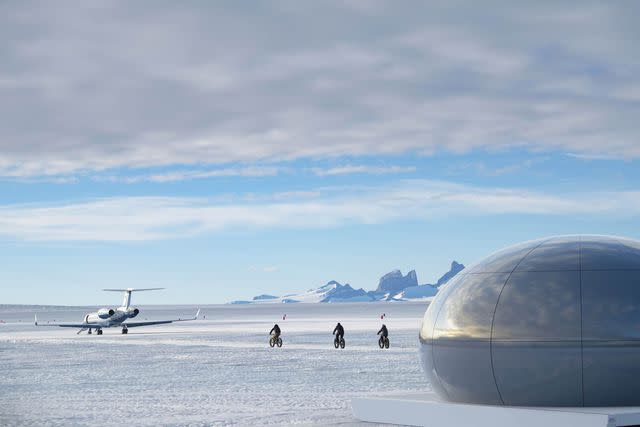
Courtesy of Echo White Desert
Echo is a short drive from Wolf’s Fang Runway but Patrick Woodhead, ever the adventurer, led us over a nunatak instead.
Entering the gray pods was like walking onto the International Space Station. The interconnected spaces were filled with curios and geometric sculptures — the kind of trinkets a space traveler of the future might collect on their journey. The vibe was fitting, as White Desert promises Echo camp "feels like visiting a galaxy far away."
Every detail was sleek and clean, with floor-to-ceiling windows that looked out over the infinite white expanse upon which this camp was set. (The camp is on sleds and can be moved anytime.) Like Whichaway, Echo has six sleeping pods that can accommodate up to 12 guests.
While the pods at Whichaway embodied a more adventurous, chalet-chic feel, Echo’s architecture evoked the modern, luxurious spirit of White Desert. Still, the similarities between the two camps ran deep: The staff service, from bartenders to guides, was of equally high quality.
Waste from all of White Desert’s camps is removed at the end of the season. Water is a precious commodity, especially at Echo, where every drop is melted from ice. So, not surprisingly, the shower situation remains in a communal area. (Though, Echo had an incredible outdoor setup using one-way glass that offered privacy while also providing views of nunataks.)
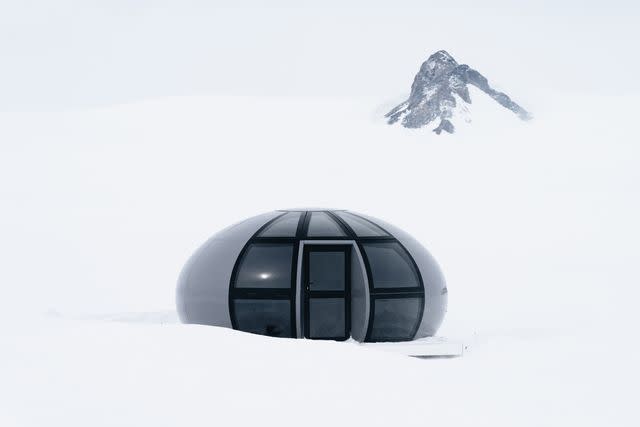
Courtesy of Echo White Desert
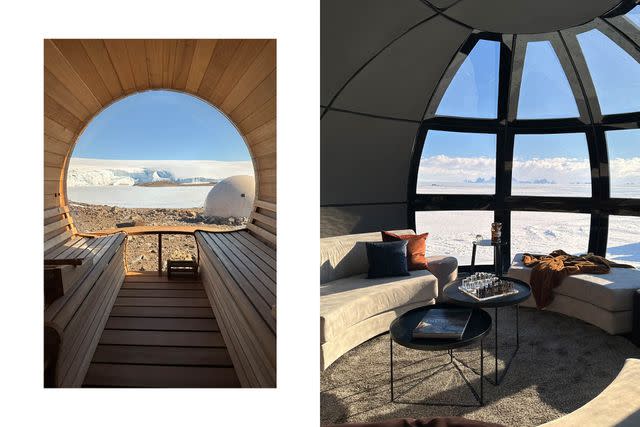
Ali Wunderman
For a weeklong trip that costs upwards of $80,000 per person, it's hard to imagine that travelers who spend that much are willing to put up with being offline, relinquishing control to the weather, and showering in a common area — or not showering at all. But a sanitized experience of Antarctica isn’t possible, and White Desert doesn’t aim to force that.
In fact, they capitalize on the way Antarctica challenges people, bringing out their best. They want guests to feel alive — to become reconnected to the sacred network of all earthly things by repeatedly experiencing the wonder of nature — while still being pampered and treated to sophisticated, yet unpretentious, meals.
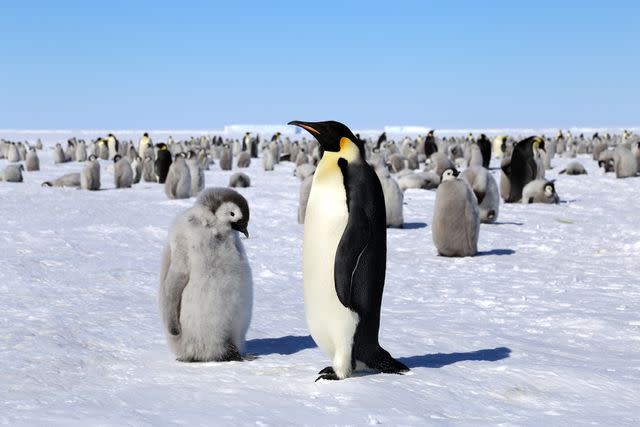
Ali Wunderman
I got lucky on my final day: The weather was perfect for a visit to the Emperor penguins. (Emperor penguins are endemic to Antarctica, with roughly 61 rookeries, or breeding colonies, along the continent's coastline. The species is protected under the U.S. Fish and Wildlife Service's Endangered Species Act, as scientists expect their global population to drop by 26 percent by 2050.)
We spent a few hours on the fringe of a rookery. The puffy gray babies were curious enough about us that we had to keep backing away. I was filled with wonder when the afternoon commute of penguin parents took place: Adults slid on fish-filled bellies to make sure their chicks were fed with regurgitated food.
By the end of my stay in Antarctica, I didn't want to leave. The magnitude of the experience, and the fact that it was over, hit me as the plane glided into the nighttime sky — the first darkness I had experienced in a week. The twinkling of a single star signified a return to my normal life, my normal schedule, and my normal weather. Though everything would be the same when I got back, I knew that, down to the cellular level, Antarctica had transformed me.
For more Travel & Leisure news, make sure to sign up for our newsletter!
Read the original article on Travel & Leisure.

